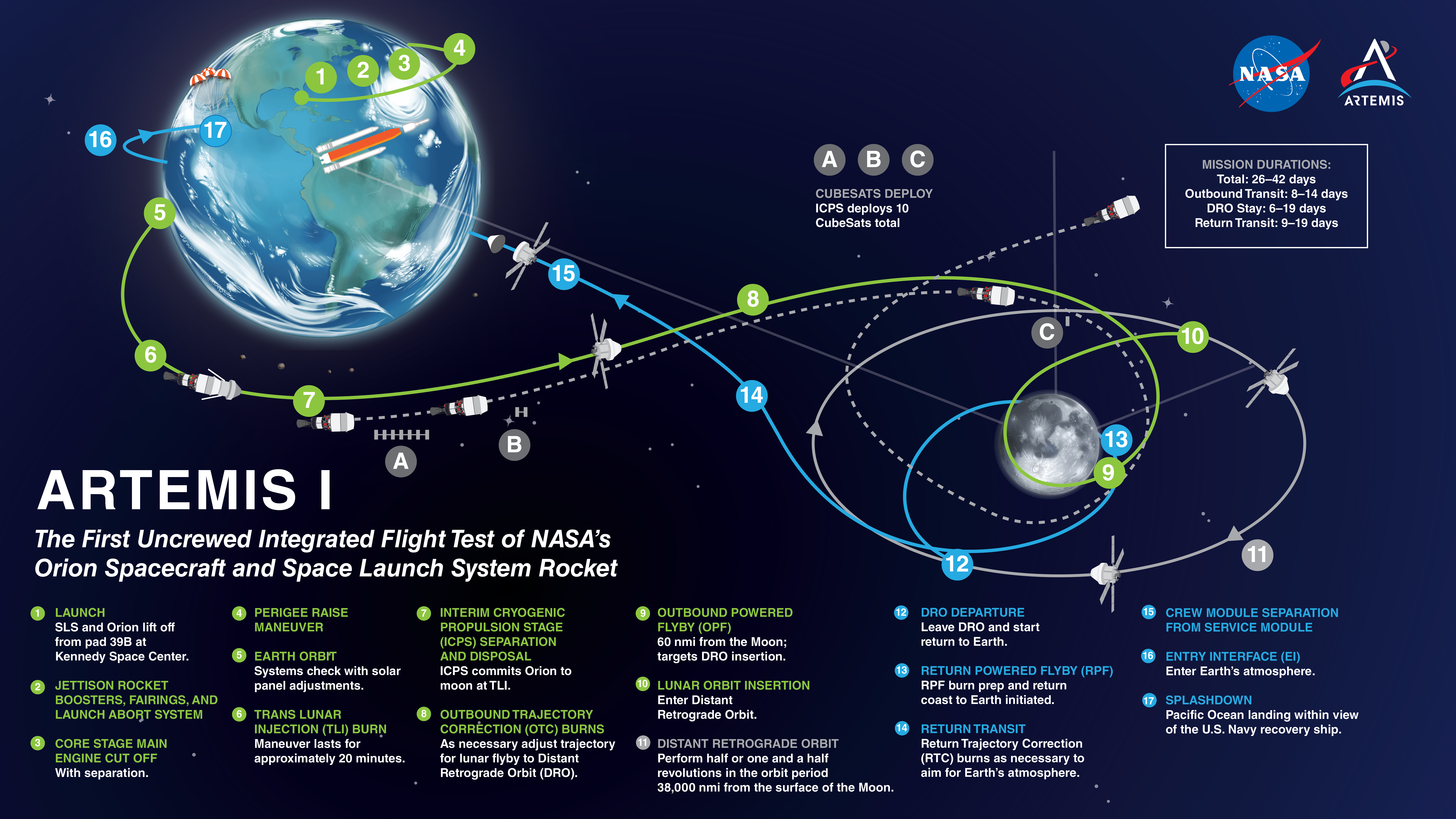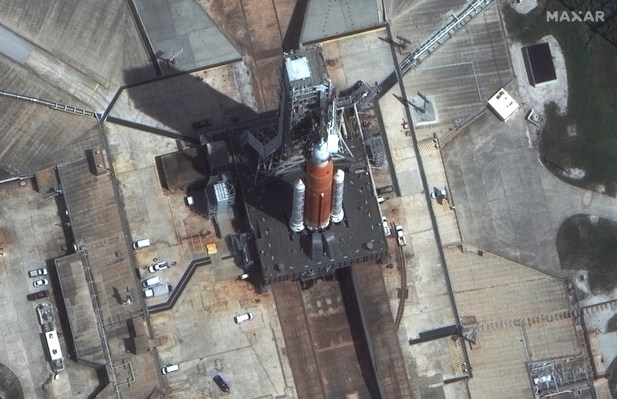Fifty-three years after people first walked on the moon, NASA is kicking off its bold Artemis program to return us there, beginning with an uncrewed launch of an enormous new rocket on Monday.
The Artemis I mission scheduled Monday morning will see the primary flight of the House Launch System (SLS) rocket and the second flight of the Orion capsule. It’s been a protracted street to the launch pad.
SLS’s origin story stretches all the way in which again to 2010, when Congress directed NASA to develop a rocket as a follow-on to the house shuttle. If the rocket’s look appears to be like acquainted — notably the 2 strong boosters that flank the central liquid hydrogen tank — that’s as a result of it borrows a lot of its expertise from the shuttle. However even with the emergence of personal launch firms like SpaceX, which has perfected the artwork of rocket reusability, NASA, Congress and the protection contractors they employed persevered in creating SLS.
All through, the undertaking has been mired in value overruns and technical delays. In complete, SLS has value greater than $20 billion — and since no a part of the rocket is reusable, the prices related to the undertaking are removed from over.
But, Monday’s launch nonetheless marks the start of what might be essentially the most intensive, expansive period of human house exploration but. If all goes to plan, people may discover reaches of the moon which have by no means been touched earlier than. We might be getting into a interval the place the moon is not only a fantastic, glowing orb within the sky, however a strong analysis station like Antartica, or a means station to different components of the photo voltaic system, to Mars and past.
The mission
The principal objective of the mission is to check Orion and its vital parts, like the warmth defend upon reentry into Earth’s environment and the communications methods, earlier than the capsule finally carries people later this decade. To get a greater sense of how people may fare within the capsule, NASA put in a model within it. The model, dubbed Moonikin Campos after an Apollo 13-era electrical engineer Arturo Campus, might be outfitted with sensors to measure radiation, in addition to “vibrations and accelerations” that people will expertise, NASA stated.
Orion will attain its preliminary orbit lower than 9 minutes after take-off. The capsule will separate from the core stage round two hours after launch, whereupon the stage will be part of the strong rocket boosters in splashing again all the way down to the ocean (no a part of SLS is reusable). Over the course of its 4 to 6 week mission, Orion will journey 280,000 miles from Earth, making a handful of shut flyby’s of the moon earlier than splashing down in California coastal waters on October 10. It’s the farthest a spacecraft rated for human use has ever traveled, in keeping with NASA. The Artemis I mission can even deposit 10 CubeSats to orbit, every with particular scientific and technical goals.

Picture Credit: NASA
What comes subsequent
The 2-hour launch window opens Monday at 8:33 AM ET. It’s the primary of a handful of alternatives to ship the 322-foot-tall rocket and capsule to house. If NASA doesn’t launch the rocket inside Monday’s two-hour window, it should have one other alternative on September 2, and one other on September 5. If a launch doesn’t happen on any of those three days, the rocket should be rolled again to VAB and significant exams — together with the all-important Flight Termination System, the sequence of parts that make sure the rocket may be safely destroyed after launch if required — will must be re-done.
The subsequent launch window would begin September 20 till October 4, with one more alternative from October 17 to October 31.
After this mission, NASA is aiming to launch Artemis II in 2024. That mission can be crewed. It could be adopted by Artemis III in the course of the last decade, which might see a lady and an individual of coloration stroll on the moon. For this remaining mission, a SpaceX Starship automobile would carry astronauts the ultimate leg from lunar orbit all the way down to the floor, a part of a $2.9 billion contract the corporate received in April of final 12 months.
NASA might be livestreaming the launch from its YouTube channel. The video will begin at 6:30 AM EST Monday.

